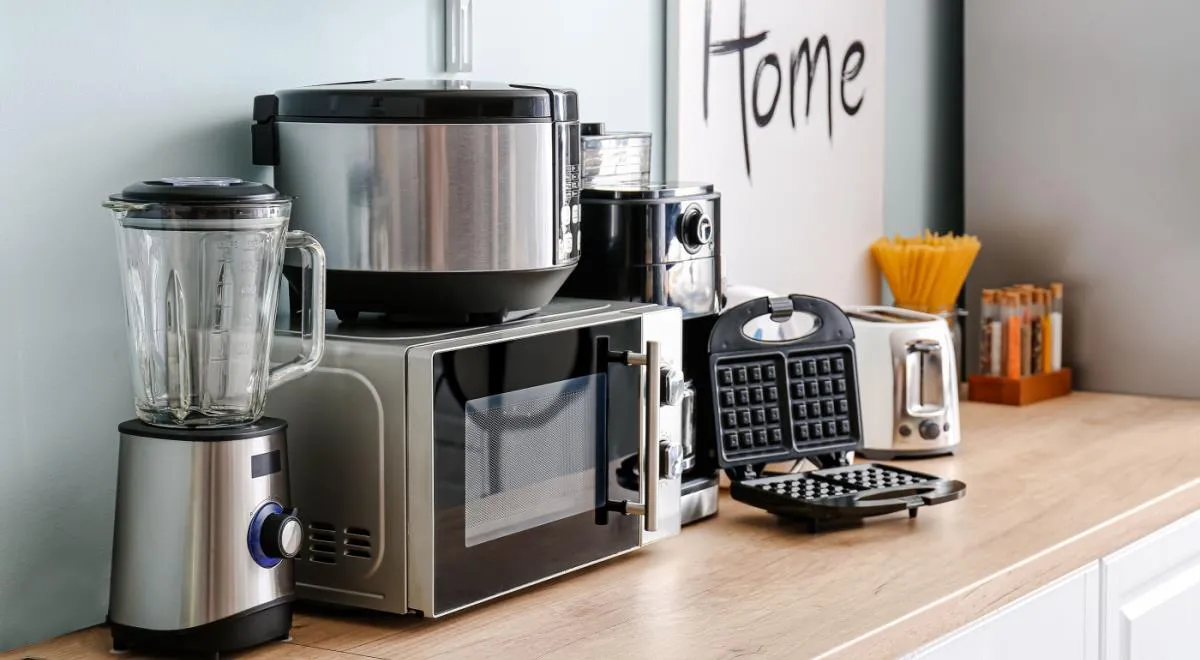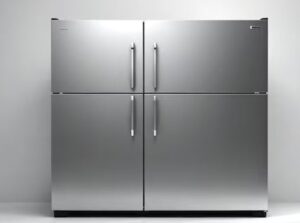Top Mistakes People Make When Buying Kitchen Appliances
Buying new kitchen appliances can be both exciting and overwhelming. Whether you’re upgrading for efficiency, remodeling your dream kitchen, or moving into...

Buying new kitchen appliances can be both exciting and overwhelming. Whether you’re upgrading for efficiency, remodeling your dream kitchen, or moving into your first home, the choices are endless—and so are the chances of making costly mistakes.
From buying the wrong size refrigerator to ignoring energy ratings or getting lured by fancy features you’ll never use, these missteps can turn your purchase into a long-term regret. The good news? Most of these mistakes are completely avoidable.
In this guide, we’ll walk you through the most common pitfalls people face when buying kitchen appliances and how you can steer clear of them. Packed with real-life examples and smart tips, this article will help you make better, more confident decisions.
1. Focusing on Style Over Function
Everyone wants a gorgeous kitchen with sleek stainless steel or matte black finishes. But often, people prioritize aesthetics over usability.
Sure, that French-door fridge might look Instagram-worthy—but does it fit your family’s storage needs?
📌 Real-Life Example: Jane, a mom of three, bought a stylish fridge with a small freezer drawer. It looked great in her kitchen, but she couldn’t handle her bulk grocery shopping. She ended up buying a separate chest freezer—an added cost and space hog.
Tip: Choose the function first. Look for appliances that meet your cooking habits, kitchen size, and household needs. You’ll appreciate performance over looks in the long run.
2. Not Measuring Properly
One of the most common (and embarrassing) mistakes is failing to measure the space correctly.
Buyers often forget to check:
- The width, height, and depth of the appliance
- Door swing clearance
- Pathways (hallways, doors) for delivery
- Ventilation and electrical space requirements
📏 Tip: Measure not just the appliance area, but the path it will travel to get there. Always double-check dimensions listed online against your available space.
3. Overlooking Energy Efficiency
Energy-efficient kitchen appliances may cost a bit more upfront, but they save you money in the long run and are better for the environment.
Unfortunately, many buyers skip over Energy Star labels or efficiency ratings, focusing solely on price and size.
💡 Example: A conventional oven might look like a deal at $500, but over five years, a high-efficiency model could save you over $300 in energy bills.
Tip: Always check energy labels. Prioritize models with good efficiency ratings, especially for refrigerators, dishwashers, and ovens, which run frequently.
4. Getting Seduced by Gadgets and Features
Touchscreens, built-in cameras, and app controls—modern kitchen appliances come packed with high-tech features. But will you actually use them?
Many buyers end up paying for fancy extras they never touch.
📱 Real-Life Story: Mark bought a smart oven that connects to his phone. After the novelty wore off, he never used the app again. Meanwhile, he was frustrated it lacked basic preheat alerts.
Tip: Choose practicality over gimmicks. Ask yourself: “Will I use this feature weekly?” If not, skip it and save your money.
5. Ignoring Reviews and Ratings
Buying based only on looks or sales pitches is risky. Customer reviews can reveal real-world performance, reliability, and support issues.
📉 Example: A flashy blender might look amazing in the store, but a quick glance at reviews might show common problems like motor burnouts or broken lids within months.
Tip: Read reviews on multiple platforms—Amazon, Home Depot, and third-party forums. Look for consistent complaints and how manufacturers respond to them.
6. Not Considering Maintenance and Cleaning
Some appliances look great out of the box, but are nightmares to keep clean or repair.
For example:
- Gas stoves with grates are harder to clean than smooth electric tops
- Some stainless steel finishes smudge easily
- Side-by-side fridges may have tight, hard-to-clean shelves
Tip: Ask about cleaning routines and replacement part availability before you buy. Opt for easy-to-clean surfaces and removable components.
7. Failing to Match Your Cooking Style
Buying an appliance that doesn’t match your cooking habits leads to frustration.
For example:
- If you love baking, invest in a convection oven with even heat distribution.
- If you meal prep often, prioritize fridge space and freezer organization.
- If you eat out frequently, a massive range or double oven may be overkill.
🎯 Tip: Think about your weekly kitchen routine and plan around that. Let your cooking lifestyle guide your appliance decisions.
8. Skipping Warranties and Customer Support Checks
A great appliance can turn into a nightmare if it breaks, and the company offers poor support.
Unfortunately, many buyers don’t review warranty terms until it’s too late.
🛠️ Example: Susan bought a high-end dishwasher that stopped working after a year. The manufacturer’s limited warranty didn’t cover labor or parts, leaving her with a $300 repair bill.
Tip: Always check:
- Warranty duration
- What’s covered (parts/labor)
- Customer service reputation
- Availability of local service technicians
9. Buying Without Comparing Prices or Models
Impulse purchases or sticking to a single brand can cost you hundreds. Take the time to compare similar models across brands and stores.
🛒 Tip: Use tools like Google Shopping or price comparison apps. Check if a slightly older model offers the same core features at a lower price.
Also, don’t forget seasonal sales—major appliances are often discounted during Black Friday, Memorial Day, and holiday weekends.
10. Ignoring Delivery, Installation, and Return Policies
Another common mistake is assuming delivery and installation are included, or not asking about return conditions.
🚚 Real-Life Example: Dave bought a new range online. Delivery was free, but installation cost an extra $150. When it didn’t fit, the return window had already passed.
Tip: Always confirm:
- What’s included in the delivery
- Installation and removal fees
- Return window and restocking fees
- What to do if the appliance arrives damaged
- About More…
Frequently Asked Questions
Q1. What are the most important factors when buying kitchen appliances?
Functionality, size, energy efficiency, brand reputation, and customer reviews should top your list. Bonus points for appliances that match your cooking habits and are easy to clean.
Q2. Is it better to buy kitchen appliances as a set or individually?
Buying a set can save you money and ensure a cohesive look. However, buying individually allows more flexibility to choose the best model from each category. It depends on your priorities—budget vs. performance.
Q3. When is the best time to buy kitchen appliances?
Look for deals during:
- Black Friday and Cyber Monday
- Memorial Day
- Labor Day
- President’s Day
- End-of-year clearance sales
Retailers often offer significant discounts and package deals during these times.
Q4. Are extended warranties worth it?
It depends. For expensive or frequently used appliances (like refrigerators or ranges), extended warranties can offer peace of mind. However, read the fine print—some warranties exclude common failures.
Q5. How long should kitchen appliances last?
Average lifespans:
- Refrigerator: 10–15 years
- Dishwasher: 7–10 years
- Oven/Range: 10–15 years
- Microwave: 7–10 years
With proper care, you can often extend this life further.
Conclusion: Shop Smart, Cook Smarter
Buying kitchen appliances is a big investment—one that impacts your daily life. The goal isn’t to buy the flashiest or cheapest model, but the one that fits you.
By avoiding the top mistakes people commonly make—like not measuring properly, ignoring reviews, or overlooking warranties—you’ll save time, money, and headaches down the road.
Take your time. Research. Ask questions. And always choose appliances that suit your lifestyle, kitchen space, and long-term needs.



